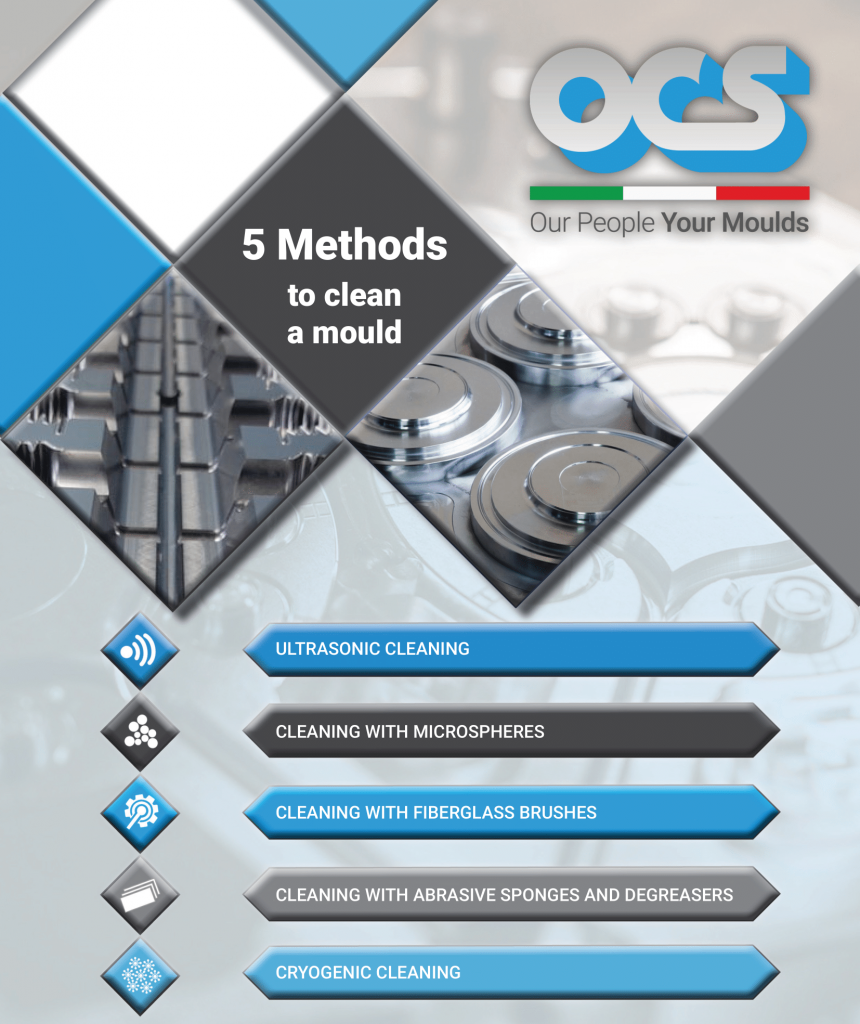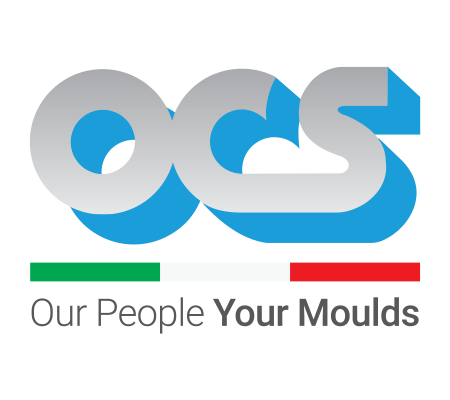Why download the ebook?
On average, a chrome-plated mould gets dirty 5 times less than one that is not chrome plated. But nonetheless, to increase its lifetime it still needs to be cleaned thoroughly, based on its use.
Who is the ebook for?
- Mould maintenance workers who want to improve their work;
- Injection Moulders who want to learn something more about the object of their work;
- Entrepreneurs and managers of moulding companies who want to know if their team is on the right track.

Contents

Ultrasonic cleaning
Ultrasonic cleaning is the fastest and most effective method and, therefore, the most commonly used. It allows any residual smoke and rubber to be removed from the mould, even in undercuts.

Cleaning with microspheres
A mould can be cleaned with microspheres of different sizes and granular compositions. Cleaning with glass microspheres is quite effective, but in the long run they can ruin the chrome plating, especially with coarse calibrated microspheres; for this reason, we suggest to use either fine-calibrated or even plastic microspheres to protect the edges.

Cleaning with fiberglass brushes
Cleaning with glass fiber brushes makes it possible to work directly on the machine to remove small particles of smoke or rubber residue without creating any damage to the surface of the mould.

Cleaning with abrasive sponges and degreasers
Cleaning with abrasive sponges and degreasers makes it possible to clean the mould only when it is cold and just to remove small residues of dirt from the surface. This is done manually and takes longer than the other procedures.

Cryogenic cleaning
Cleaning with dry ice allows to intervene on the machine without having to remove the mold and without compromising the chrome plating treatment.
And you, what cleaning method do you use?
Find out our tips about mould cleaning for technical rubber items and o-rings.



